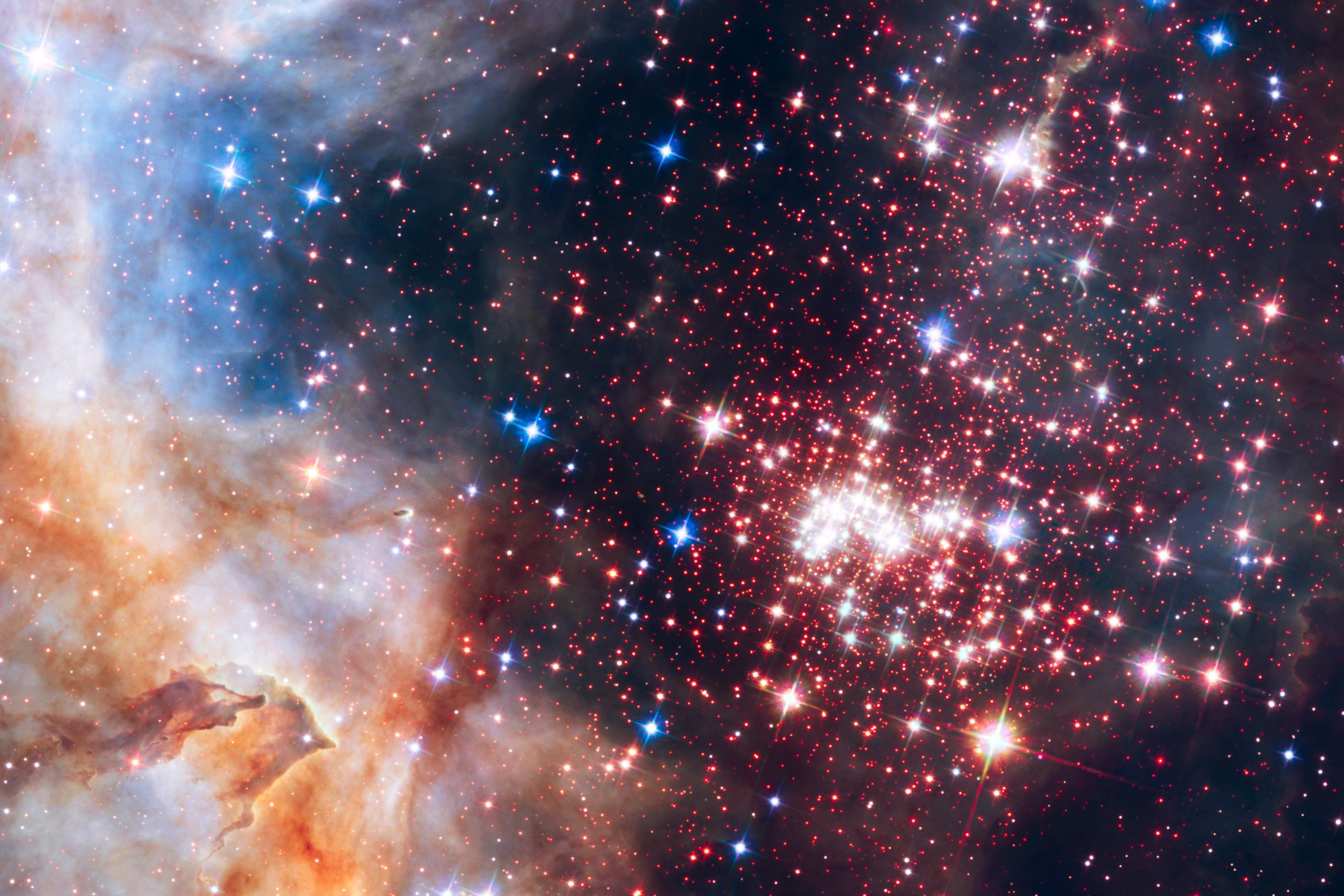Giant stars prevent the formation of planets
The chance for a young star to raise some planetary offspring apparently depends a great deal on the neighborhood it lives in. This, at least, is one finding that astronomers have discovered with the help of the Hubble Space Telescope. For three years, they observed the open star cluster Westerlund 2 which contains about 5,000 stars, including some real giants, within a relatively small space.
Westerlund 2 is only one to two million years old. That makes it an ideal candidate to test theories on planet formation, because all the stars it contains have just started or are just about to start forming planets. Thus, astronomers are basically able to watch these stars, and some of these are the most massive and hottest young stars in the Milky Way, going through all the gymnastics of pregnancy. Using Hubble’s Wide Field Camera 3 they were also able to find that 1,500 of the total 5,000 stars with 0.1 to 5 solar masses fluctuate in luminosity, which indicates the presence of a protoplanetary disk.
Hubble also found another peculiar feature: only stars outside the especially dense central region appeared to have orbiting disks with large embedded objects – planetary cores. While the telescope measured reduced luminosity due to occultation in 5 percent of the stars in the outer area, reduced luminosity was not recorded for any star within about four light-years from the center of the star cluster.
The presence of very large stars in the immediate vicinity appears to prevent the formation of planets. The strong radiation of the giant stars in the central region also probably doesn’t help. It changes the composition of the protoplanetary disk of the smaller, sun-like stars so much that areas of higher density in these disks cannot coalesce into larger objects. If our Solar System had formed inside of Westerlund 2, we probably wouldn’t be here. But the night-time sky there must be a sight to behold, since it’s already so impressive from here, 20,000 light-years away.
